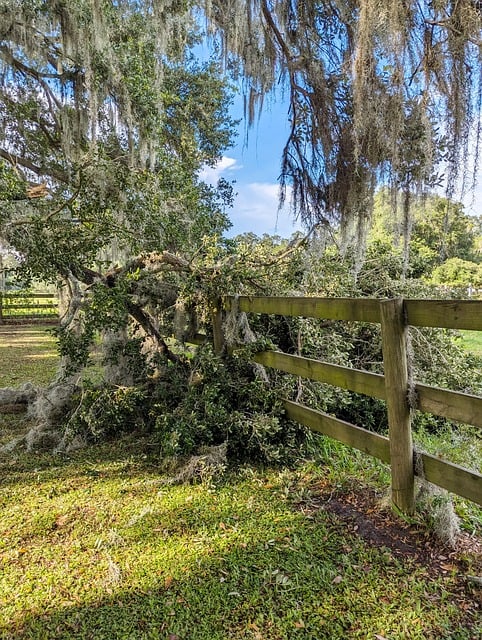Fences serve as more than mere boundaries; they enhance outdoor spaces and contribute to a home’s curb appeal. To ensure they remain attractive and durable, consider fence staining and sealing. This comprehensive guide delves into the intricacies of this process, from understanding the benefits and various stain types to preparing your wooden fence for optimal results. We’ll also explore color options, finishes, and protective measures, culminating in tips for sealing your freshly stained fence to safeguard its longevity.
- Understanding Fence Staining: Benefits and Types
- Preparation: Ensuring Optimal Results Before Staining
- Choosing the Right Stain: Color, Finish, and Protection
- Sealing for Durability: Protecting Your Stained Fence
Understanding Fence Staining: Benefits and Types
Fence staining is more than just adding color; it’s a protective coat designed to enhance the beauty and longevity of your wooden fence. The process involves applying a specialized finish that seeps into the wood, shielding it from elements like UV rays, moisture, and extreme temperatures. This not only preserves the fence but ensures it retains its aesthetic appeal over time.
There are several types of fence staining options available, each with unique benefits. Water-based stains offer easy application and quick drying times, making them popular choices for DIY projects. Oil-based stains, on the other hand, provide deeper color saturation and better protection against moisture. For a durable, long-lasting solution, semi-transparent and transparent finishes fill in wood grain, offering both aesthetic enhancement and structural support.
Preparation: Ensuring Optimal Results Before Staining
Before staining your wooden fence, proper preparation is key to achieving long-lasting and visually appealing results. Start by cleaning the fence thoroughly to remove any dirt, dust, or debris that might affect the adhesion of the stain. Use a pressure washer or a brush with mild detergent and water to ensure a clean surface. This step is crucial as it allows the stain to bond evenly, preventing streaks or uneven coverage.
Once cleaned, inspect the wood for any cracks, splinters, or damaged areas. Repair these issues using appropriate fixing methods. Fill in gaps with wooden putty or caulk, and sand the fence gently to create a smooth base. Additionally, check for loose or missing boards and replace them if necessary. A well-maintained fence will not only look better but also extend the life of your stain job.
Choosing the Right Stain: Color, Finish, and Protection
Choosing the right stain is a crucial step in fence staining and sealing. Consider the color first—it should complement your home’s exterior and personal aesthetic preferences. However, beyond visual appeal, stain type also dictates the level of protection your wood receives. Water-based stains offer a low to moderate protective barrier with subtle color enhancement, while oil-based stains provide superior protection against water damage and UV rays but may produce a darker, more vibrant finish. Solid colors are ideal for maximum protection, whereas transparent or semi-transparent stains let the natural grain of the wood show through while still shielding it from the elements.
Finish is another key factor. Mat or satin finishes offer subtle sheen, hiding minor surface imperfections, while glossy or semi-gloss finishes reflect light, creating a cleaner, more vibrant appearance that’s easier to keep clean. Always consider the environmental conditions in your region and the exposure of your fence—elements like sunlight, moisture, and temperature fluctuations can impact stain performance and longevity. Consult product labels for specific recommendations based on these factors.
Sealing for Durability: Protecting Your Stained Fence
When it comes to maintaining a wooden fence, sealing is an essential step that often follows staining. Just as stain enhances the aesthetics of your fence by adding colour and depth, sealant plays a crucial role in safeguarding its longevity. Sealing creates a protective barrier against environmental elements, preventing moisture, UV rays, and extreme temperatures from penetrating the wood fibres. This is particularly important because untreated wood is susceptible to rot, warping, and fading over time.
By applying a high-quality sealant, you create a shield that repels water, reduces humidity inside the fence boards, and blocks out harmful UV rays. This not only maintains the vibrant colour of your stained fence but also delays the natural breakdown process, ensuring your investment lasts for years to come. A well-sealed fence is less likely to develop cracks, splits, or rot, making it a wise step to protect your wooden fence’s durability and beauty.
